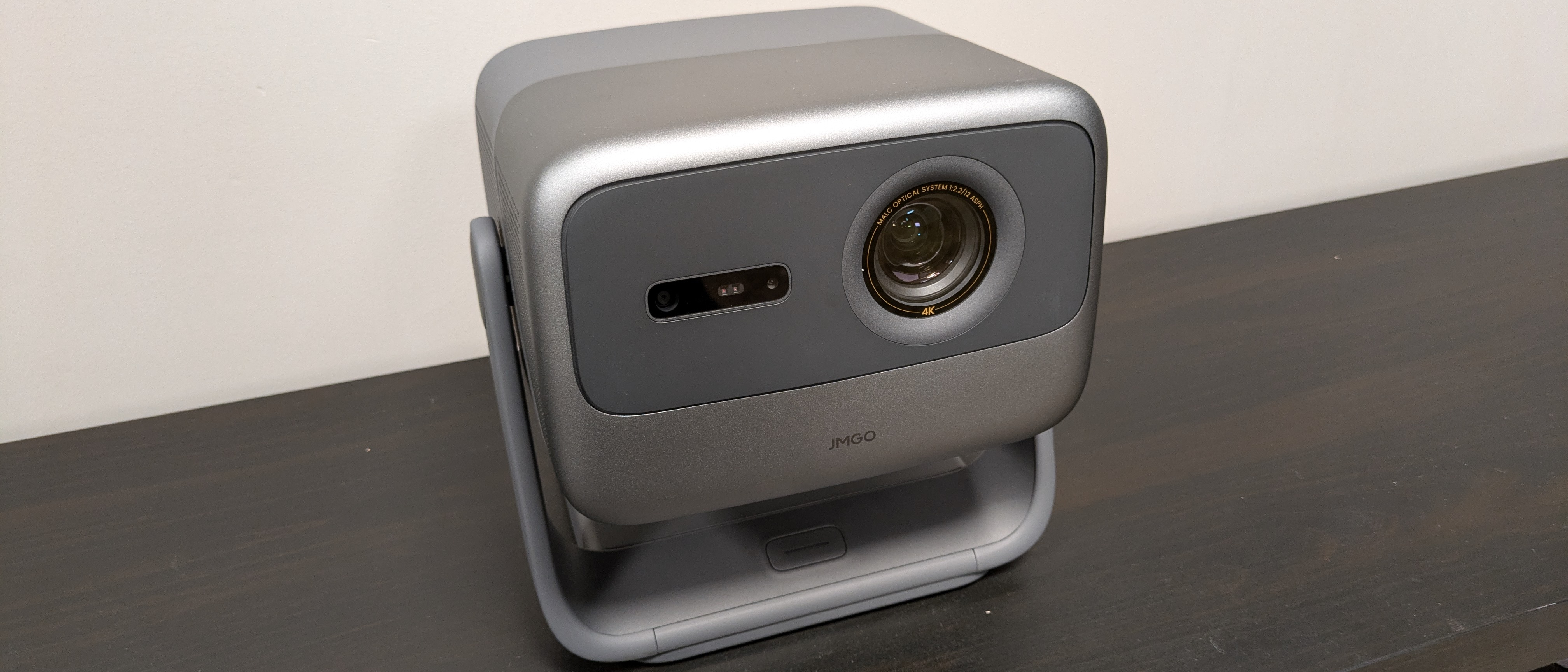TechRadar Verdict
The JMGO N1S Pro 4K is a jack-of-all-trades portable projector that does a good job across the board. It delivers crisp detail and rich color and has great built-in sound and versatile setup features. And with Google TV on board, it's an all-in-one streaming, picture, and sound machine.
Pros
- +
Good detail and color
- +
Great built-in audio
- +
Easy set-up
Cons
- -
Pricey
- -
Inconsistent black levels
- -
Can struggle with motion
Why you can trust TechRadar
JMGO N1S Pro 4K: One minute review
The JMGO N1S Pro 4K ($1,999) is a portable projector that uses a triple laser DLP light engine and is rated for 2,400 ANSI lumens brightness. It has Google TV built-in for streaming, allowing for easy access to apps including Netflix, Disney Plus, and Prime Video. It’s pricier than some of the other best portable projectors, such as the LG CineBeam Q and BenQ X300G, but offers a good mix of performance and features.
The JMGO N1S Pro 4K’s effective auto keystone and focus features, plus 135 degree vertical and 360 degree horizontal adjustments, make it easy to set up anywhere. Its looks may be fairly standard, but it’s hard to argue against its versatility.
Picture quality on the N1S Pro 4K is pretty solid. Colors look vibrant and natural. Contrast is rich, albeit better in bright scenes, and details and textures are refined. But it’s the N1S Pro 4K’s built-in sound that pleasantly surprises, with punchy bass, clear dialogue, and good directional sound. The sound quality is perfect for casual viewing, and an HDMI eARC port also gives you the option to add one of the best soundbars.
While the N1S Pro 4K isn’t going to topple the best 4K projectors on the market, it’s still a very good projector that can cover many bases, from movies to games and more.
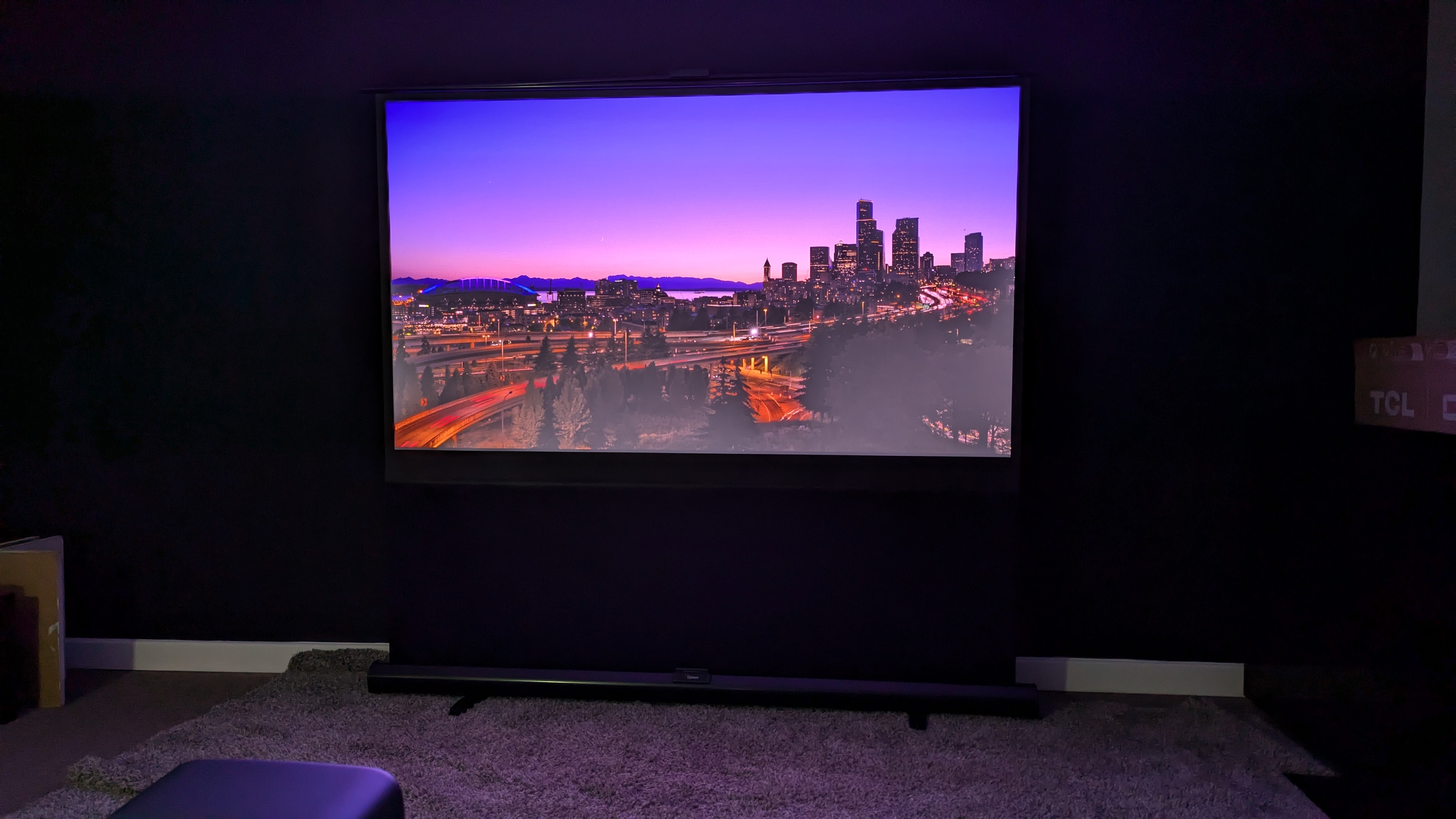
JMGO N1S Pro 4K: Prices & release date
- Release date: 2024
- Price: $1,999
The JMGO N1S Pro 4K is the mid-range model in JMGO’s N1S range, sitting above the JMGO N1S and below the JMGO N1S Ultimate 4K. It’s available in the US for $1,999, a similar price to other portable projectors such as the BenQ X300G ($1,799), but higher than the Anker Nebula Cosmos 4K SE and LG CineBeam Q, both priced at $1,299.
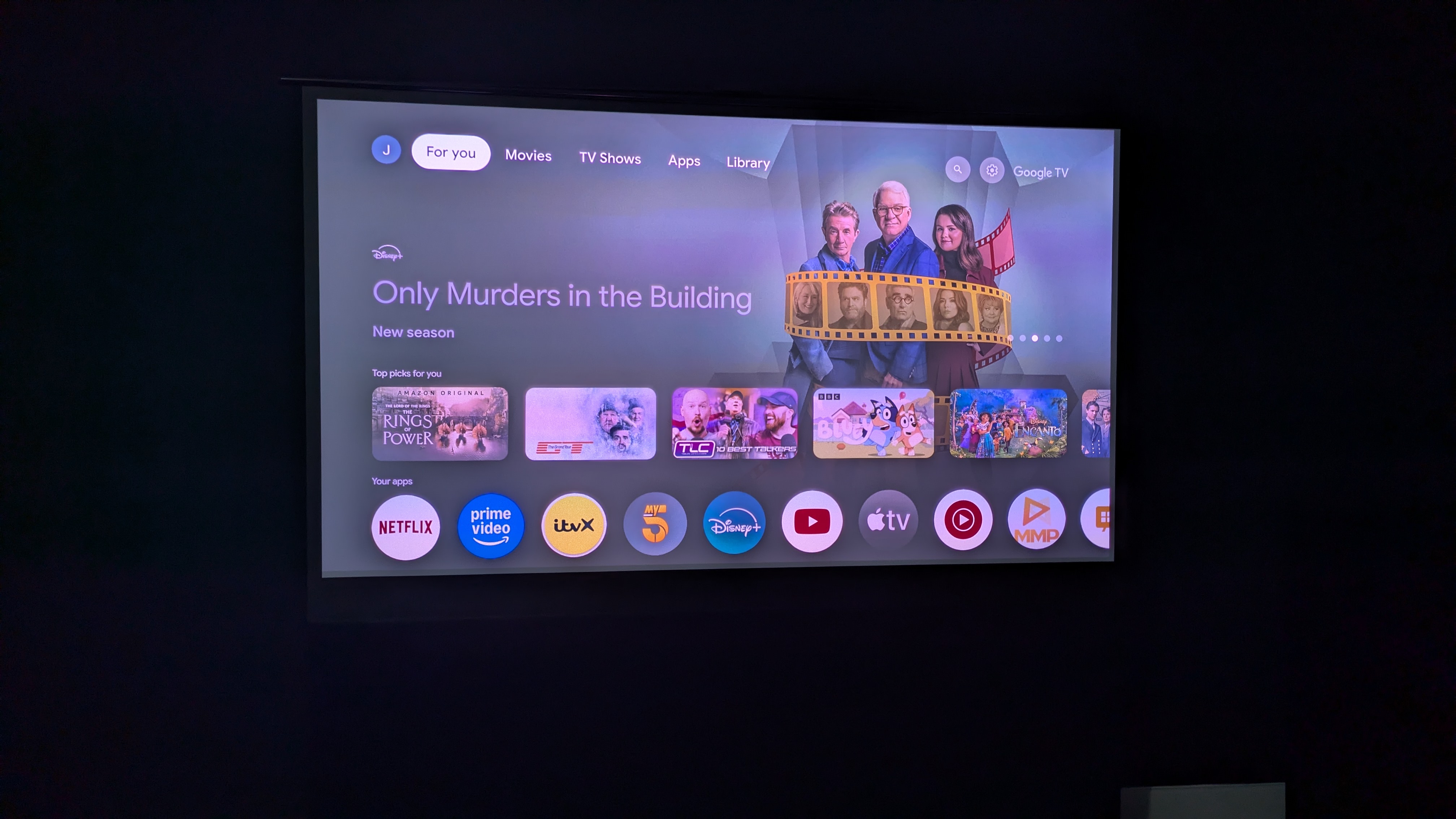
The JMGO N1S Pro 4K has Google TV built-in
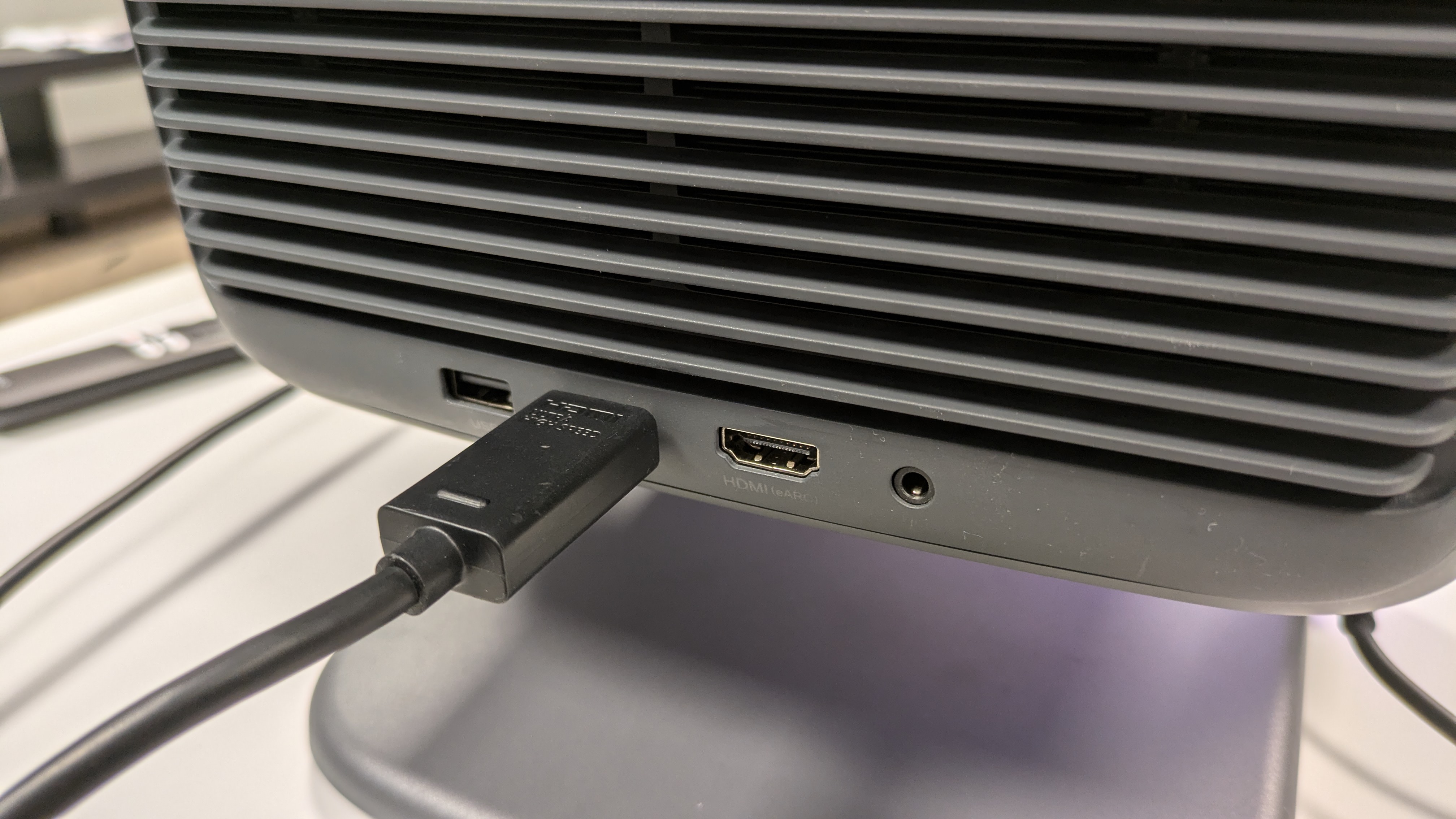
JMGO N1S Pro 4K has two HDMI ports, including one with eARC
JMGO N1S Pro 4K: Design & features
- Plain, but solid and sturdy design
- Triple laser DLP light engine
- Google TV
The JMGO N1S Pro 4K is a robust, solidly built portable with a hinged design that lets you aim it towards an adjacent wall or the ceiling. Its plain, matte gray appearance doesn’t have the same flair as other portable projectors such as the LG CineBeam Q, and measuring in at 8 x 9.3 x 9.5 inches (H x W x D), it isn’t as portable. But it’s still easy enough to tote around, with a styrofoam carry case provided. There is no battery power option for the N1S Pro 4K, which needs to be plugged in.
The JMGO N1S Pro 4K uses a triple laser DLP light engine and has a brightness rating of 2,400 ANSI Lumens. It fits screens ranging from 85-180 inches and has auto focus and auto keystone correction, which I found to be fairly effective. Moving the JMGO back and forth, it was able to easily correct itself on the 80-inch screen I used during testing. Manual keystone correction is also available.
Sign up for breaking news, reviews, opinion, top tech deals, and more.
The N1S Pro uses Google TV as its smart platform, providing access to Netflix, Prime Video, Disney Plus and more streaming apps. There are two HDMI ports, including one with eARC to connect a soundbar, a USB-A port and a 3.5mm headphone output. Bluetooth and Chromecast are also supported for wireless streaming from a phone or tablet.
Support is provided for the HDR10 high dynamic range format, but not Dolby Vision like the Anker Nebula Cosmos 4K. Standard Dolby and DTS soundtracks can be played through its 20W speakers, but Dolby Atmos and DTS:X are not supported.
- Design & features score: 4/5

JMGO N1S Pro 4K: Picture & sound quality
- Natural looking color
- Middling black levels and contrast
- Solid built-in audio
For testing, I used an Optoma 80-inch, 1.0 gain matte white projection screen. Before doing any critical viewing, I made brightness measurements using a 10% HDR white window pattern. The N1S Pro 4K yielded 178 and 161 nits in Standard and Movie mode, respectively, with brightness set to maximum. This is a very good result that puts it above the likes of ultra short throw projectors such as the BenQ v5000i, which achieved 125 nits in Bright mode, and also above the LG CineBeam Q, which measured 60 nits in Filmmaker Mode.
Measuring the N1S Pro 4K’s UHDA-P3 and BT.2020 color gamut coverage in Movie mode, it achieved results of 99.1% and 97.4%, respectively. The latter falls short of the 110% claimed by JMGO, but is still an excellent result that beats the likes of the more premium Samsung Premiere 9 ultra short throw projector.
I next watched some reference 4K Blu-rays and streaming clips that I regularly use to analyze the best TVs. The N1S Pro 4K displayed natural, yet dynamic color throughout my testing. In the throne room fight from Star Wars: The Last Jedi, a scene filled with strong reds, the N1S Pro 4K did a great job displaying the vibrant color and also delivered a surprising level of punch in HDR highlights. Watching the opening scene of La La Land, the colors on show all looked bold without being oversaturated, and Mia’s yellow dress in the ‘A Lovely Night’ scene looked vivid against the dark blue and black background.
Details were accurate and refined with the N1S Pro 4K, primarily in brighter scenes. Textures had a more lifelike quality than I anticipated, with close-up shots of pilots in Top Gun: Maverick revealing facial hair and skin pores.
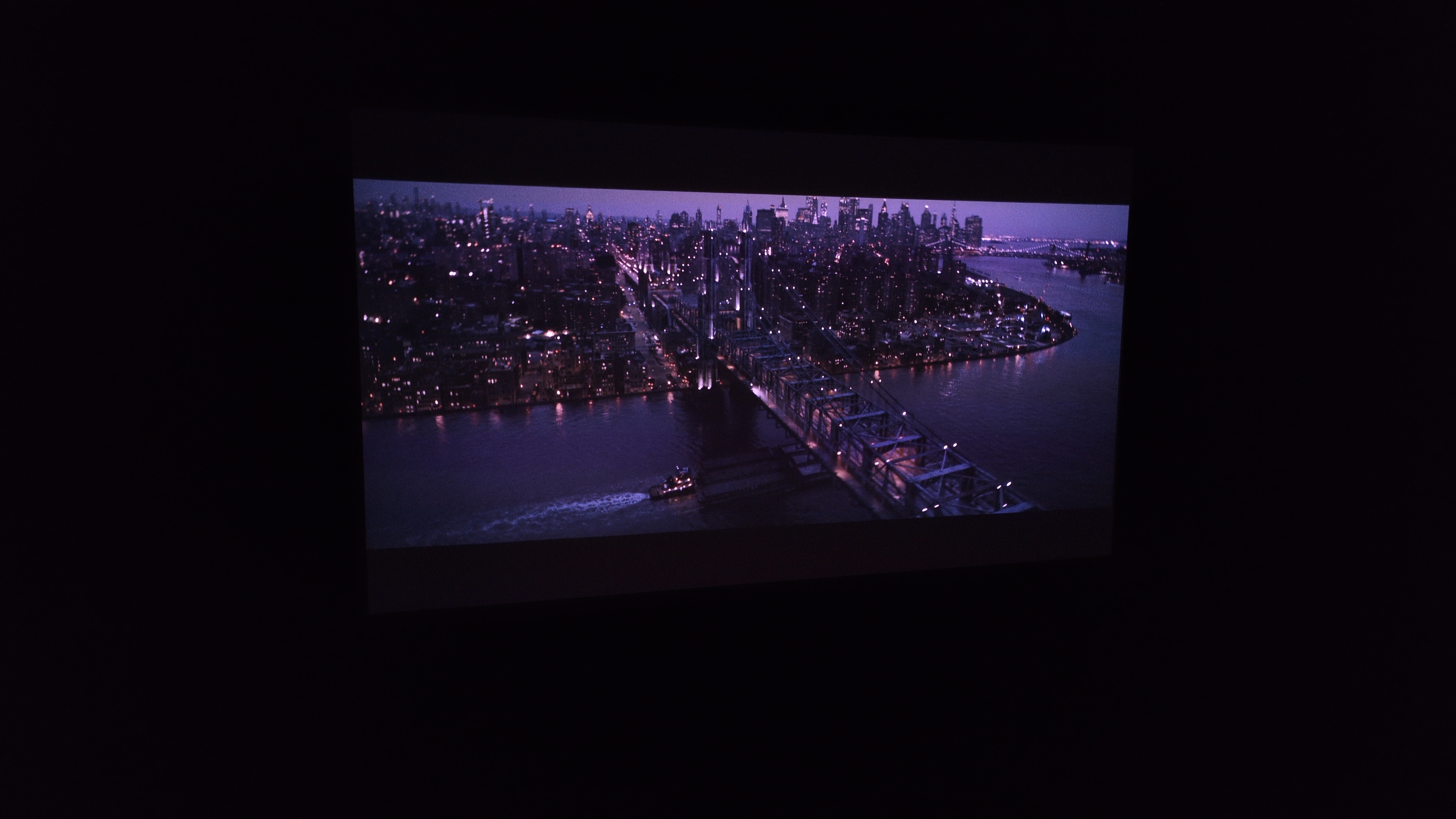
Black levels and contrast were a mixed bag. Viewing The Batman, a visually challenging movie with limited brightness and a gloomy overall look, the N1S Pro 4K displayed good shadow detail and contrast in the few ‘well-lit’ scenes such as an aerial shot of Gotham. The balance between light and dark tones was also fairly accurate in the movie’s opening crime scene.
However, blacks looked more of a dark gray in The Batman’s more dimly lit sequences, even when viewed in a darkened room. Despite solid contrast, black crush in the opening crime scene resulted in a loss of detail, with darker shadows taking on a flat appearance.
The N1S Pro 4K also struggled with motion. Sports benefitted from the projector’s MEMC setting being turned on, but there was still some blur present. Movies looked better, but I did see some judder in the long panning shots in Top Gun: Maverick.
The projector’s built-in speakers were a pleasant surprise, delivering punchy bass and clear dialogue regardless of what I watched. In The Batman, the rumbling of car engines in the Batmobile chase scene sounded weighty and some surround effects such as crashes and tires could also be heard. Even in La La Land, musical numbers sounded well-balanced. The soundstage was unsurprisingly limited, but overall the N1S Pro 4K’s speakers were good for a portable projector.
Gaming is limited to 4K 60Hz on the JMGO, which has a measured input lag time of 35ms. While that’s significantly higher than other projectors such as the BenQ v5000i, which gave a result of 18ms, gaming was still an enjoyable experience, with Battlefield V on Xbox Series feeling smooth when I scanned the environment.
- Picture and sound quality score: 4/5
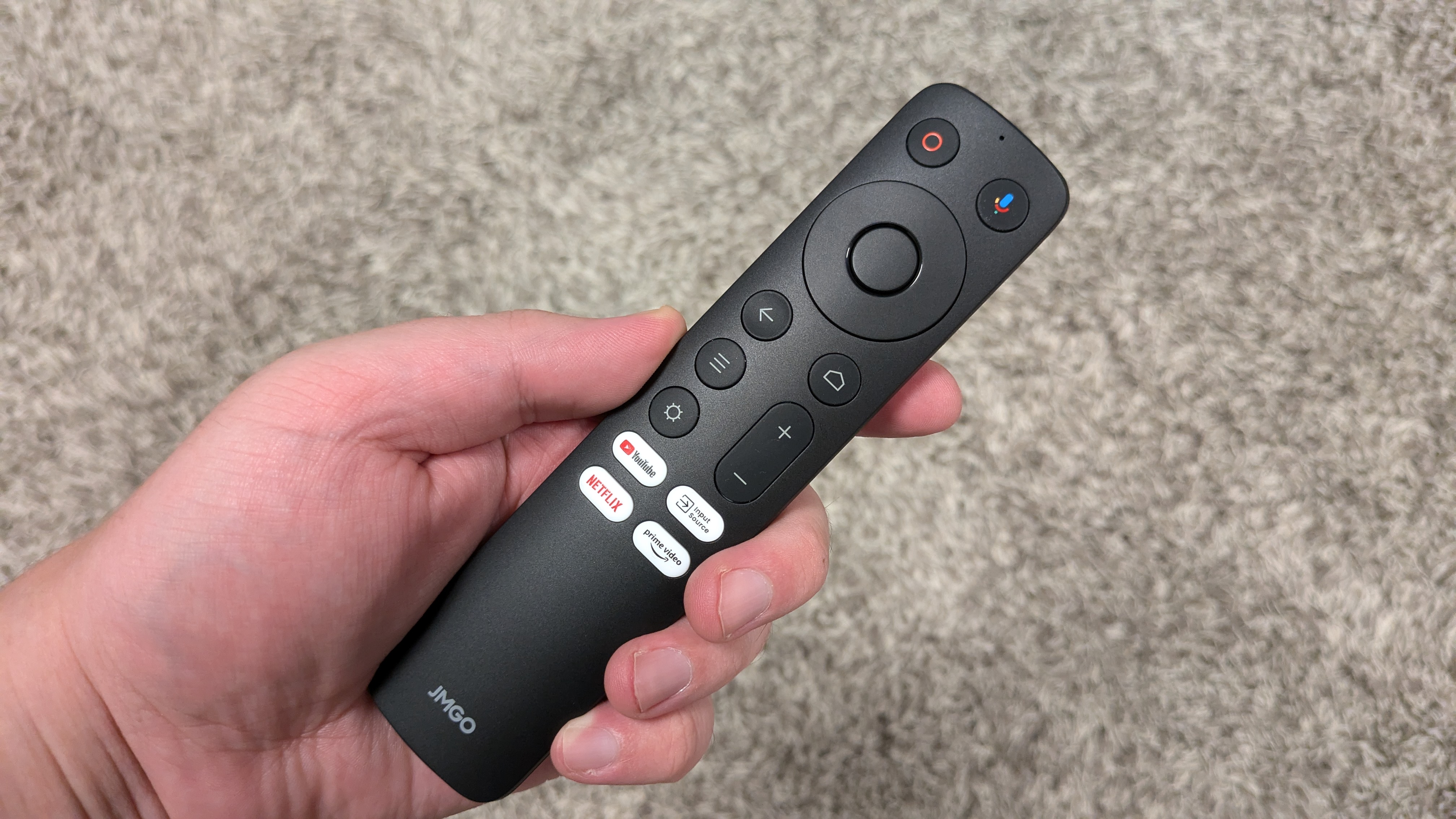
JMGO N1S Pro 4K: Value
- Good features and performance
- Built-in Google TV
- Pricey
Priced at $1,999, the N1S Pro 4K sits at the premium end of the portable projector market. It costs $500 less than its more premium sibling, the JMGO N1S Ultra 4K, but over $700 more than both the BenQ X300G and LG CineBeam Q. It’s undoubtedly a pricey portable.
For the money, however, you’re getting a versatile, smart 4K projector. Google TV allows for easy streaming and the auto keystone and focus settings make setup a breeze. When you combine that with its impressive overall performance, the JMGO N1S Pro 4K comes across as fairly priced.
- Value score: 4/5
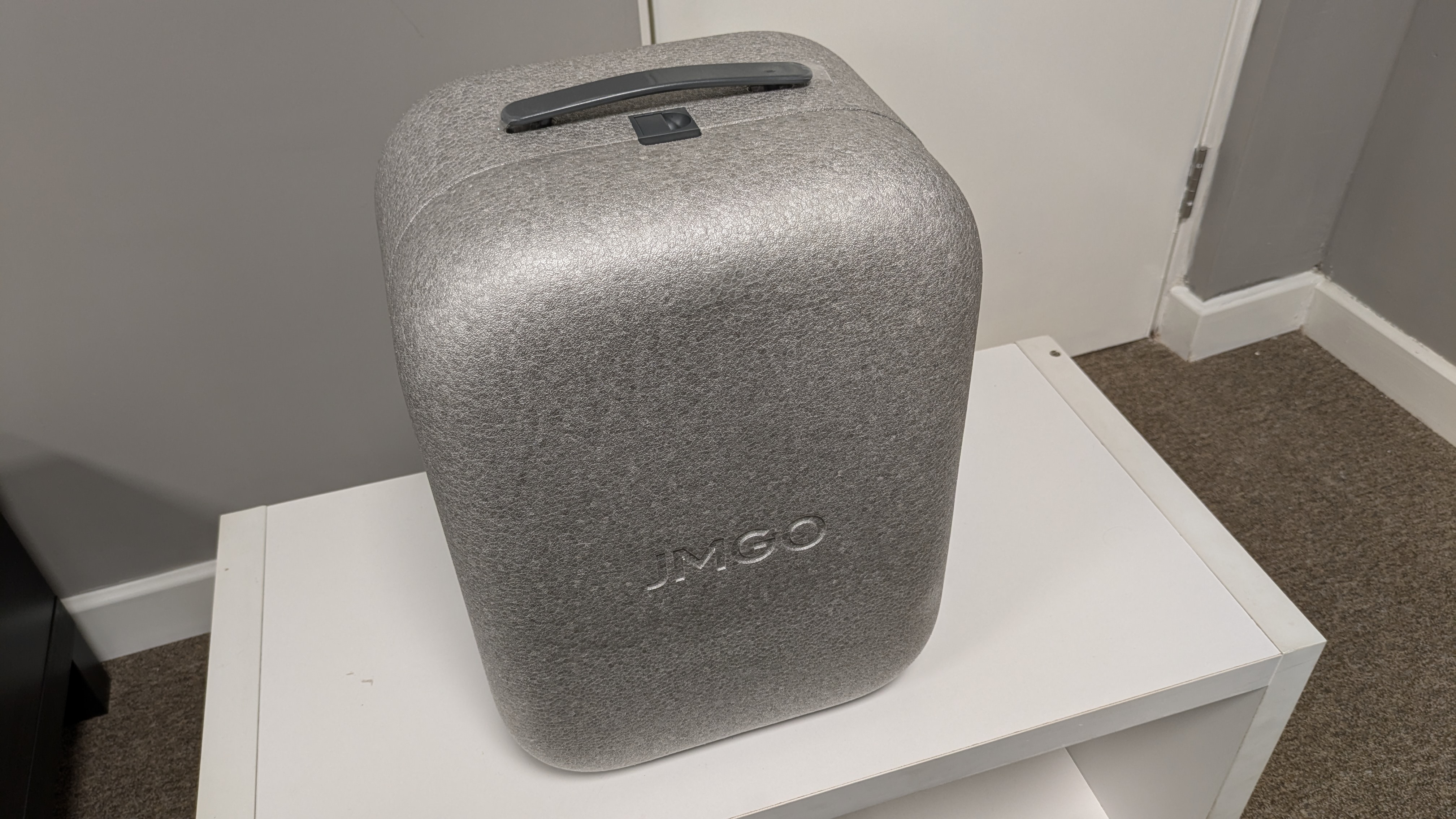
Should I buy the JMGO N1S Pro 4K?
| Attributes | Notes | Rating |
|---|---|---|
| Design and features | Plain design, but a good selection of features for setup, picture adjustment and streaming | 4/5 |
| Picture and sound quality | A colorful, detailed HDR picture and punchy built-in sound, but with inconsistent black levels | 4/5 |
| Value | Pricey compared to some other portable projectors, but good features and performance for the price. | 4/5 |
Buy it if...
You want a great picture
The N1S Pro 4K's picture has bold color and rich detail, especially with HDR sources.
You want solid built-in sound
The N1S Pro 4K's speakers won't beat a soundbar, but they provide enough clarity and bass heft to please casual viewers.
You want versatility
The N1S Pro 4K can be set up in a range of positions that make it good for not only watching movies but other uses as well.
Don't buy it if...
You want the best possible picture
The N1S Pro 4K's black levels and contrast can be inconsistent and sometimes result in detail loss.
You're on a budget
The N1S Pro 4K offers a lot for the money, but there's no getting around its high price tag.
You watch a lot of sports
Motion can be a challenge for the N1S Pro 4K, with some judder and blur still present even after tweaking motion settings.
Also consider
| JMGO N1S Pro 4K | BenQ X300G | LG CineBeam Q | Anker Nebula Cosmos Laser 4K | |
|---|---|---|---|---|
| Price: | $1,999 | $1,799 | $1,299 | $1,999 |
| Screen sizes supported: | 85-180 inches | 30 to 150 inches | 50-120 inches | 60 to 150 inches |
| Brightness (specified): | 2,400 ANSI lumens | 2,000 ANSI lumens | 500 ANSI lumens | 2,200 lumens |
| HDR support | HDR10, HLG | HDR10, HLG | HDR10, HLG | HDR10 |
| Optical technology: | RGB laser DLP | LED, DLP | RGB laser DLP | Laser DLP |
| Smart TV: | Google TV | Android TV | WebOS | Android TV |
| Connections: | HDMI x2 (x1 eARC), USB-A (power), 3.5mm | 2x HDMI 2.0 (1x eARC, 1x internal), USB-A, USB-C | HDMI, USB type-C (display, power) | HDMI 2.0 input, 3.5mm analog audio output; powered USB type-A |
BenQ X300G
The BenQ X300G is a better 4K projector for gaming than the N1S Pro 4K and delivers similar brightness and solid picture quality, though the N1S Pro 4K has better built-in sound. They cost roughly the same, but the X300G takes the win by being priced at $200 less.
Read our BenQ X300G review
LG CineBeam Q 4K Projector
The CineBeam Q offers better style, portability and value than the N1S Pro 4K, but doesn't have the same brightness or screen size options.
Read our full LG CineBeam Q review
Anker Nebula Cosmos 4K projector
The closest rival to the N1S Pro 4K, the Nebula Cosmos 4K offers similar smart features, brightness and performance. However, the Nebula Cosmos demonstrated some odd processing quirks, especially with HDR pictures, when we tested it. It is cheaper than the N1S Pro 4K if you're looking to save money.
Read our full Anker Nebula Cosmos 4K review
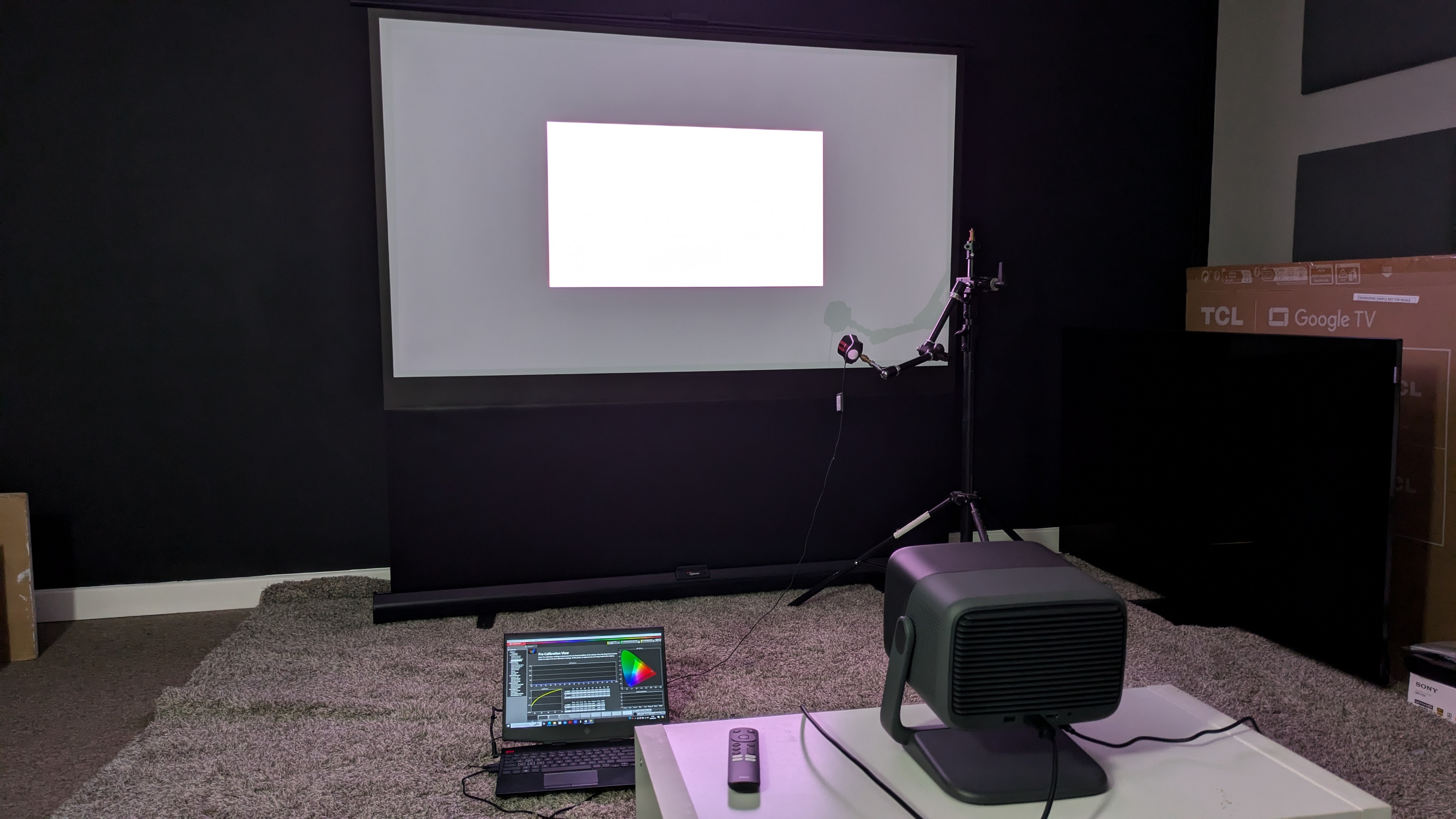
How I tested the JMGO N1S Pro 4K
- Mostly tested in dim or pitch black conditions
- Tested using HDR and SDR sources
- Portrait Displays' Calman color calibration software used for measurements
I tested the JMGO N1S Pro 4K using an Optoma 80-inch, 1.0 gain matte white screen. I first did casual viewing to establish its most accurate picture mode – in this case Movie mode – before moving on to critical testing.
I used both standard-definition and high-definition content, as well as 4K streaming and Blu-rays to test the N1S Pro 4K's picture quality, focusing on brightness, color, black levels, contrast, motion, upscaling and detail. For 4K Blu-rays, I used the Panasonic DP-UB820 4K Blu-ray player.
I also tested the N1S Pro 4K's gaming capabilities using an Xbox Series X.
For objective testing I made measurements using a test pattern generator and colorimeter, recording the results with Portrait Displays' Calman color calibration software. I also measured the N1S Pro 4K's input lag using a Leo Bodnar 4K HDMI input lag tester.
For a more detailed explanation of how we test TVs at TechRadar, check out the link.
- First reviewed: October, 2024
- Read TechRadar's review guarantee

James is the TV Hardware Staff Writer at TechRadar. Before joining the team, he worked at a major UK based AV retailer selling TV and audio equipment, where he was either telling customers the difference between OLED and QLED or being wowed by watching a PS5 run on the LG 65G2. When not writing about the latest TV tech, James can be found gaming, reading, watching rugby or coming up with another idea for a novel.
